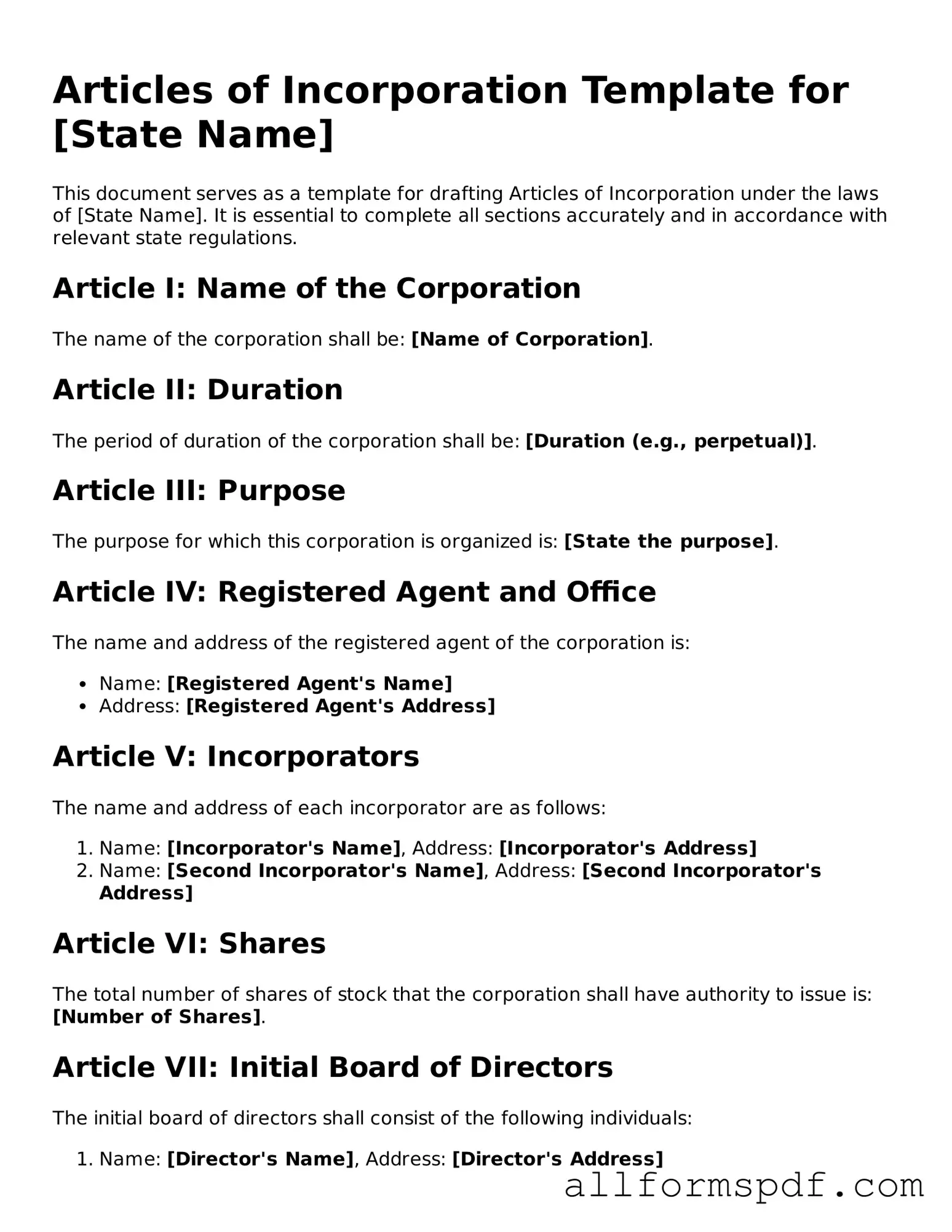When individuals set out to incorporate a business, they often encounter the Articles of Incorporation form. This document is crucial for establishing a corporation's legal identity. However, errors in its completion can lead to delays or even rejection of the application. Understanding common mistakes can significantly enhance the chances of a successful filing.
One frequent mistake is the omission of essential information. Many people fail to include the corporation's name, which must be unique and comply with state regulations. Without a proper name, the application cannot proceed. Additionally, the purpose of the corporation should be clearly stated. Vague or overly broad descriptions can raise questions during the review process.
Another common error involves the selection of the registered agent. This individual or entity is responsible for receiving legal documents on behalf of the corporation. Some applicants mistakenly list themselves without understanding the implications. A registered agent must be available during business hours and have a physical address in the state of incorporation.
Incorrectly identifying the number of shares authorized for issuance is also a typical mistake. Applicants may either underestimate or overestimate this number. It is important to consider future growth and funding needs. The shares should be clearly defined in terms of class and par value, if applicable.
Inaccurate or incomplete information about the incorporators can lead to complications. Each incorporator's name and address must be provided. Failing to include all required incorporators can result in delays or the rejection of the filing.
Many individuals overlook the importance of signing the document. The Articles of Incorporation must be signed by at least one incorporator. An unsigned document is invalid and will not be processed. Additionally, the date of signing should be included to establish a timeline for the incorporation.
Some applicants neglect to check the specific requirements of their state. Each state has its own regulations regarding the Articles of Incorporation. Failing to adhere to these guidelines can result in rejection or additional fees. Therefore, it is crucial to consult the appropriate state agency before submission.
Another mistake involves submitting the form without the required fees. Each state requires a filing fee that varies significantly. Applicants should ensure that payment is included and that the method of payment is acceptable to the state agency.
Inconsistencies in the information provided can also cause issues. For example, if the name of the corporation differs between sections of the form, it can lead to confusion. Consistency is key in ensuring that the application is processed smoothly.
Lastly, some individuals fail to seek assistance when needed. While the Articles of Incorporation form may seem straightforward, legal and procedural complexities can arise. Consulting with a legal professional or utilizing resources provided by state agencies can help avoid common pitfalls and ensure a successful incorporation process.
